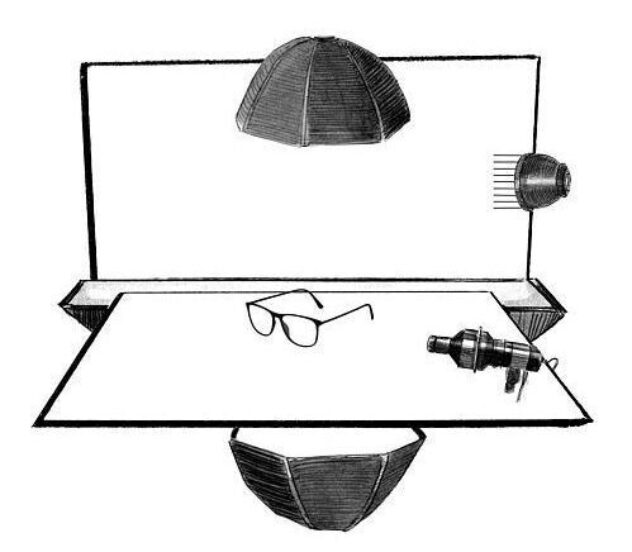The goal was to set up a clean light that allows the photographer to shoot several glasses in a minimum of time. Such a light is supposed to be adjusted quickly (to different opacities of the frame in this situation) while maintaining the identical look.

The glasses are placed on a white shiny acrylic plate and some 30 cm behind it, a white cardboard is positioned. In a first step, a P70 normal reflector with narrow grids is directed onto this white cardboard in a way that, as seen from the camera, the glasses are in the center of a bright reflection. This reflection also creates the nice shadow in front of the object.
So far, the gradation of the main light (the standard reflector) fades into very dark corners - we need a fill in light. Here I used two identical, small Octaboxes, one above and one below the acrylic. They both have the same effect on the contrast of the picture, but the Octabox below the acrylic also emphasizes the transparency of the glasses frame. Together, they always emit the same amount of light but they allow the photographer to control the opacity of the object very precisely; one can give more fill-in from above (more reflections) or from below the table (more transparency).
A narrow and long Softbox is placed as close as possible to the white cardboard, just out of the picture, hidden behind the table. This position guarantees a very fast fall off of the light on the background.
Finally, a Picolite with projection attachment is ready to be used from the right. If there are important design elements on the object (such as the JAGUAR writing in this example), they can be illuminated very well defined with this precise light shaper.

The picture is shot with a medium format camera and a focal length of 80 mm.
The exposure time was 1/250 s and the aperture f/ 22. ISO 100.






